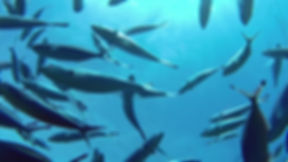
Hostal Casa López
Punta Gorda, Cienfuegos, Cuba.
Cienfuegos
La ciudad de Cienfuegos fue fundada en el año 1819 bajo el nombre de la Fernandina de Jagua por el francés Don Luis Declouet y es popularmente conocida por su majestuosa belleza, como la Perla del Sur. Cienfuegos es la ciudad cubana más importante de cuantas se fundaron en el siglo XIX y por su reciente construcción, resulta la más moderna y mejor trazada de las grandes ciudades isleñas y llegó a ser una de las de mayor auge industrial del país durante muchos años.
Está situada en la orilla noroeste de la bahía que lleva su nombre, y que comparte con uno de los complejos portuarios más importantes del Caribe.
La influencia gala en Cienfuegos es prominente, decidiendo su desarrollo arquitectónico y agrícola en los primeros años, lo cual se refleja en la construcción, en su Centro Histórico Urbano, de un Arco de Triunfo, para tratar de igualarse con París.
Todo ello le permite incursionar en la industria turística con un producto peculiar, cuyos encantos no defraudan a quienes hacen más que una breve pausa para conocerla en el trayecto desde o hacia la villa colonial de Trinidad.
Rica en palacios (Blanco, Ferrer, el entorno cultural de la provincia se completa con el cementerio de Reina (único de su tipo en la Isla) y la necrópolis Tomás Acea (única tipo jardín en la Mayor de Las Antillas), ambos declarados monumentos nacionales.
El primero de ellos fue construido en 1830 y constituye un verdadero museo de arte funerario; muestra el sistema de enterramientos por nichos verticales prevaleciente en la época colonial española.
Cienfuegos dispone también de la playa de Rancho Luna, dueña de finas arenas y aguas apacibles, con una plataforma litoral particularmente accidentada y poblada por una numerosa vida submarina. ), parques (José Martí, Villuendas, Panteón de Gil…), teatros e iglesias (Catedral), y con su Paseo del Prado, el cual se prolonga hasta el mar, muestra al mundo los encantos del teatro Tomás Terry, fiel reflejo de la época de oro de Cienfuegos; o el Palacio de Valle, fiel exponente del eclecticismo arquitectónico prevaleciente en la ciudad, donde armonizan los estilos mudéjar y bizantino con el veneciano, el gótico y el barroco.
En la bahía, se encuentra la fortaleza de Nuestra Señora de los Ángeles de Jagua, concluida en 1745, es un sólido exponente de la arquitectura militar del siglo XVIII en Cuba. Al fundarse era la única construcción de su tipo con que contaba el centro de la Isla para vigilar el Mar Caribe de los ataques de corsarios y piratas.
En julio del año 2005, el centro histórico urbano fue declarado Patrimonio Cultural de la Humanidad por la UNESCO.
The city of Cienfuegos was founded in the year 1819 under the name of Fernandina of Jagua by Don Luis Declouet French and is popularly known for its majestic beauty, as the Pearl of the South. Cienfuegos is the most important Cuban city of few were founded in the 19th century and by its recent construction, is the most modern and best drawn big island cities and became one of the greater boom industry of the country for many years.
It is located on the northwest shore of the Bay that bears his name, and which shares with one of the most important port in the Caribbean.
The Gallic influence in Cienfuegos is prominent, deciding their architectural and agricultural development in the early years, which is reflected in the construction, in its urban centre of a triumphal arch, to try to match with Paris.
This allows you to venture into the tourism industry with a peculiar product, whose charms not disappoint those who do more than a brief pause to meet her on the way to or from the colonial town of Trinidad.
Rich palaces (white, Ferrer, the cultural environment of the province Tomás Acea (only type garden in the largest of the Antilles), complete cemetery Queen (only one of its kind on the island) and the necropolis declared national monuments.
The first one was built in 1830 and is a true Museum of funerary art; shows the prevailing system of burials by vertical niches in the Spanish colonial era.
Cienfuegos also has Beach Rancho Luna, owner of fine sand and calm waters, with a coastal platform particularly rugged and populated by a large underwater life. ), parks (José Martí, Villuendas, Gil's pantheon...), the theatres and churches (Cathedral), with its Paseo del Prado, which extends to the sea, shows the world the charms of the theatre Tomás Terry, reflection of the golden age of Cienfuegos; or the Valle Palace, faithful exponent of the prevailing architectural eclecticism in the city, where harmony with the Venetian, Gothic and Baroque mudejar and Byzantine styles.
In the Bay, the fortress of our Lady of the Angeles de Jagua, completed in 1745 is, is a solid example of the military architecture of the 18th century in Cuba. The was founded was the only construction of its kind that had the center of the island to monitor the Caribbean Sea from attacks by pirates.
In July of 2005, the urban historic center was declared Cultural patrimony of humanity by UNESCO.
Fotogalería
Cienfuegos la linda Perla del Sur.
